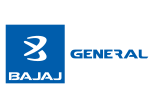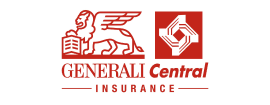What Is The Purpose Of An Endowment Plan?
Table of Contents
Numerous alternatives are available, thanks to the ever-increasing variety of insurance policies available. Understanding the essential aspects of the plan that's suitable for you is therefore crucial. Unlike other types of pension plans, endowment pension plans use a distinct approach to managing assets. They combine the benefits of saving and insurance with the reassurance of knowing that you are protected. As outlined in this article, buying an endowment insurance plan has a number of key goals.
Primary Objectives Of Purchasing Endowment Plans
Here are some of the main objectives of purchasing endowment plans -
1. Achieves Two Goals
For this reason, endowment plans are popular among investors. Plans of this type offer both savings and insurance benefits to the policyholder's family members. It can be viewed as a form of protection for this reason.
2. Building A Saving Corpus
Endowment plans are distinguished from other types of plans by the fact that they offer a twofold benefit. In an endowment plan, the benefits of both saving and insurance are combined into one single plan. Predetermined premium deposits help build a savings account that may be accessed as needed. It's important to create a safety net through long-term savings techniques. Investors with low risk tolerance can now take advantage of endowment programmes. Money may be saved over time by participating in endowment programmes.
3. Safe Investment Option
Traditional endowment policies are considered safer than other investment options like mutual funds or ULIPs because the money is not invested directly in equity funds or the stock market.
4. Coverage Under An Insurance Policy
Endowment plans, as previously mentioned, provide both savings and insurance coverage for their participants.
Maturity benefits are paid out to the beneficiaries of endowment plans in addition to life insurance coverage.
Financially dependent relatives will be more secure when they don't have you around.
5. Rider Supplements Allow For Plan Customization
To make an endowment insurance plan more lucrative for investors, riders are added to the plan's main framework. They increase policy protection in a variety of situations. Depending on the insurer, different riders are available that can be discussed and altered during the insurance purchase process.
Riders are available for endowment policies, and they include:
i. Rider for Accidental Death
ii. Term benefit riders
iii. Rider for Accidental Total And Permanent iv. Disability Benefit
v. Rider for Critical Illness
6. Consider The Long-Term Option
Endowment plans allow for longer tenures, up to 30 years. Up to age 100 can be covered under some endowment plans You can use this function to help you save for the future. He/she will receive a long-term savings account if they/they survive their untimely demise, or they will receive it themselves if they/they survive their untimely death.
7. Payout Flexibility
If you have an endowment plan, you can choose to receive the guaranteed sum in a lump sum or in instalments over time.
This feature of an endowment plan allows the policyholder to access the money as needed (if any).
8. High-Yielding Investments
A higher and risk-free return is offered by endowment plans, whether they provide maturity or death benefits. You will earn a large sum of money over the course of your policy's life because of the premiums you pay.
Your family and your future plans will be supported by the returns from an endowment plan.
Final Thoughts
To set them apart from the other plans in the range, each plan has a unique set of features. Before investing your money in a certain plan, it's important to understand and note the differences. In the article above, we have outlined the salient features of an endowment plan to help you better understand them and make an informed decision.
Also Read: Tax Benefits In Endowment Insurance Plans
How Do Endowment Plans Work and Do They Generate Returns?
Disclaimer: This article is issued in the general public interest and meant for general information purposes only. Readers are advised not to rely on the contents of the article as conclusive in nature and should research further or consult an expert in this regard.



























































